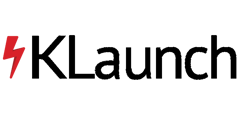How to plan and design a bot, determine use case, execute tasks, and determine when it is "done"
Building a bot can be anywhere from simple to incredibly complex. Sometimes planning a bot can be even more complicated because of the many options and ways to achieve your goal.
1. Planning & Design
a. Clarify Objectives
-
Business Goals: What problem must the bot solve? (e.g., reduce support tickets, boost leads, guide appointment booking.)
-
User Needs: Who’s chatting, and what do they expect? (e.g., quick answers, guided workflows, human handoff options.)
-
Success Metrics: Define KPIs up front (completion rate, conversion rate, average handle time, user satisfaction score).
b. Select Bot Architecture
-
Flow Logic: Rule‑based trees for predictable processes (appointment scheduling, form filling).
-
AI Matching: Free‑text FAQ engine for organic Q&A.
-
Hybrid Model: Structured flows + AI catch‑all layer to handle off‑script inputs.
c. Map the Conversation
-
User Journey Diagrams: Sketch each major path (happy path, error path, handover path).
-
Decision Trees: Detail each prompt, user response option, and subsequent branch.
-
Content Outline: List every message, quick‑reply, button, or media asset.
2. Determining the Use Case
a. Identify Primary Use Case
-
Support & Service: FAQ handling, triage, ticket creation.
-
Lead Generation & Sales: Qualification quizzes, product recommendations.
-
Onboarding & Education: Step‑by‑step tutorials, policy walkthroughs.
-
Follow‑Up & Retention: Automated SMS/email check‑ins, satisfaction surveys.
b. Define Scope & Boundaries
-
What the Bot Will Do: Clearly state in‑scope tasks (e.g., “book appointments,” “provide pricing”).
-
What’s Out of Scope: List topics or requests the bot will hand off to humans.
-
Channel Constraints: Will it live on web chat, SMS, WhatsApp, or multiple channels? Note any compliance requirements (e.g., HIPAA for healthcare).
3. Execution & Build Tasks
| Phase | Key Activities |
|---|---|
| Design Artifacts | – Finalize flow diagrams and content scripts – Create user‑face mocks (chat window, SMS UI) |
| Platform Configuration | – Set up conversation nodes in your bot platform – Upload intents/FAQs |
| AI Training | – Import FAQ entries and sample utterances – Tune similarity thresholds and fallback flows |
| Integrations | – Connect to CRMs, ticketing systems, databases via APIs or webhooks |
| Security Setup | – Apply encryption, access controls, audit logging – Configure consent workflows if needed |
| Testing | – Unit‑test each flow branch – Conduct beta tests with internal users – Iterate on feedback |
| Analytics Configuration | – Define events and goals (clicks, form submits, conversion events) – Set up dashboards |
4. Completion Criteria (“When Is the Bot Done?”)
A bot can be considered “done” when it meets all of the following:
-
KPI Targets Achieved
– Conversion, completion, and containment rates hit defined thresholds. -
User Testing Success
– Beta users reliably complete tasks without confusion or drop‑outs. -
Low Error & Handoff Rates
– Off‑script fallback triggers are below acceptable limits; handover to humans is seamless. -
Compliance & Security
– Meets all industry or legal requirements (encryption, data storage, opt‑in/opt‑out flows). -
Monitoring & Feedback Loop Established
– Analytics dashboards are live, alerts set for anomalies, and a process exists for ongoing iteration.
Final Thoughts
By following the four-phase roadmap—planning & design, use‑case definition, disciplined execution, and data‑driven readiness checks—and leveraging platforms like KLaunch KBot Lightning, you’ll not only deliver a chatbot that meets requirements on day one but also one that adapts and scales as your business evolves!
